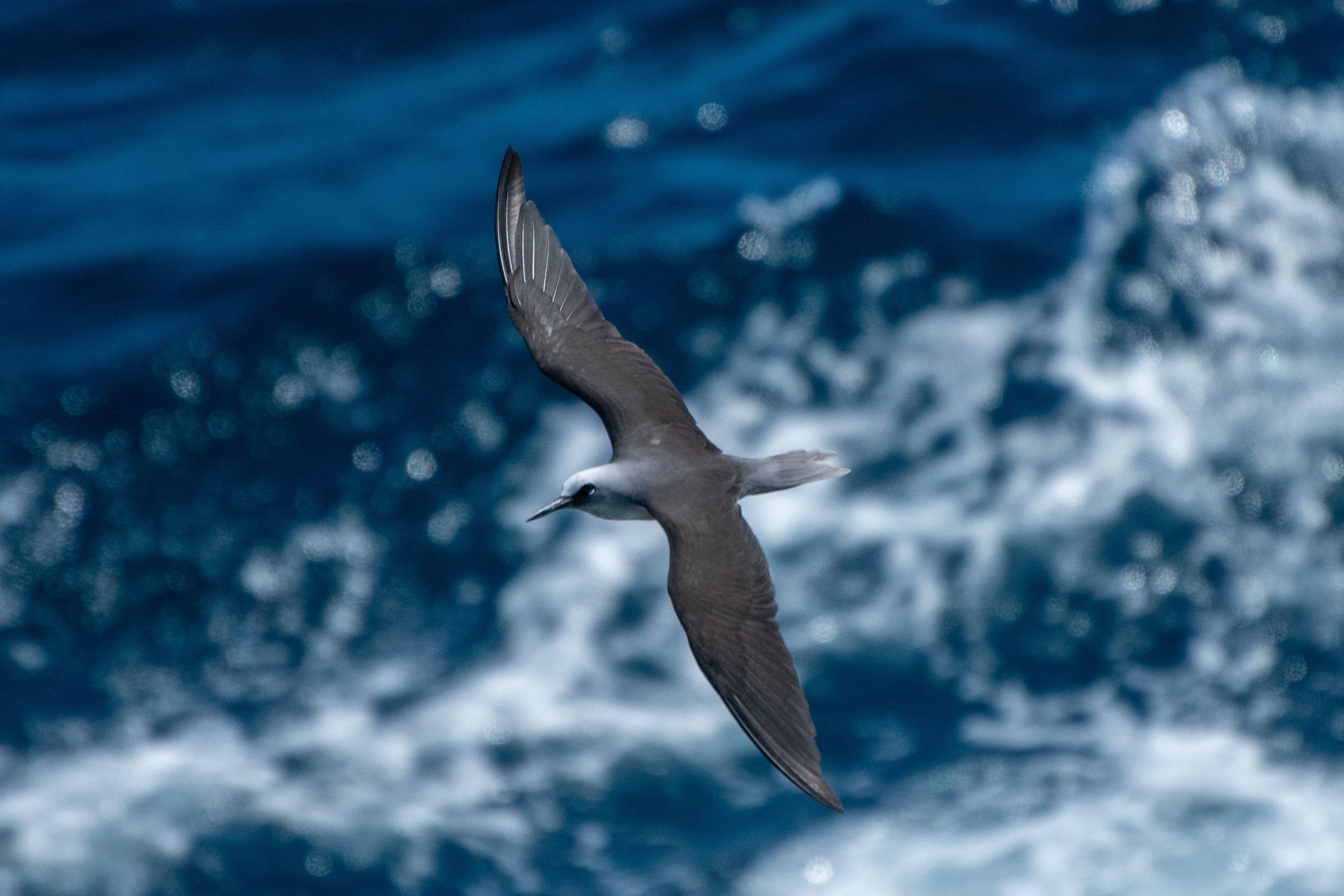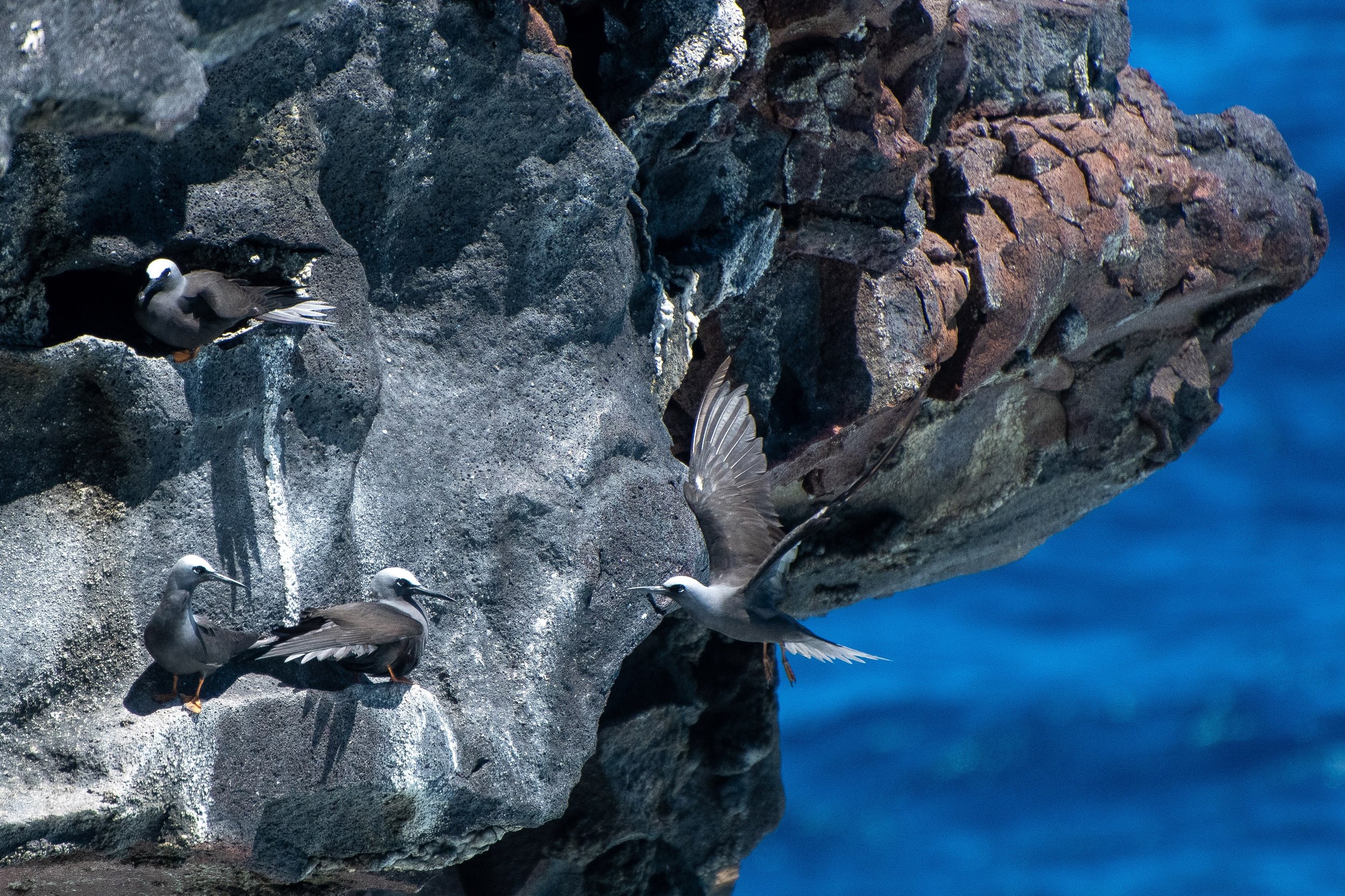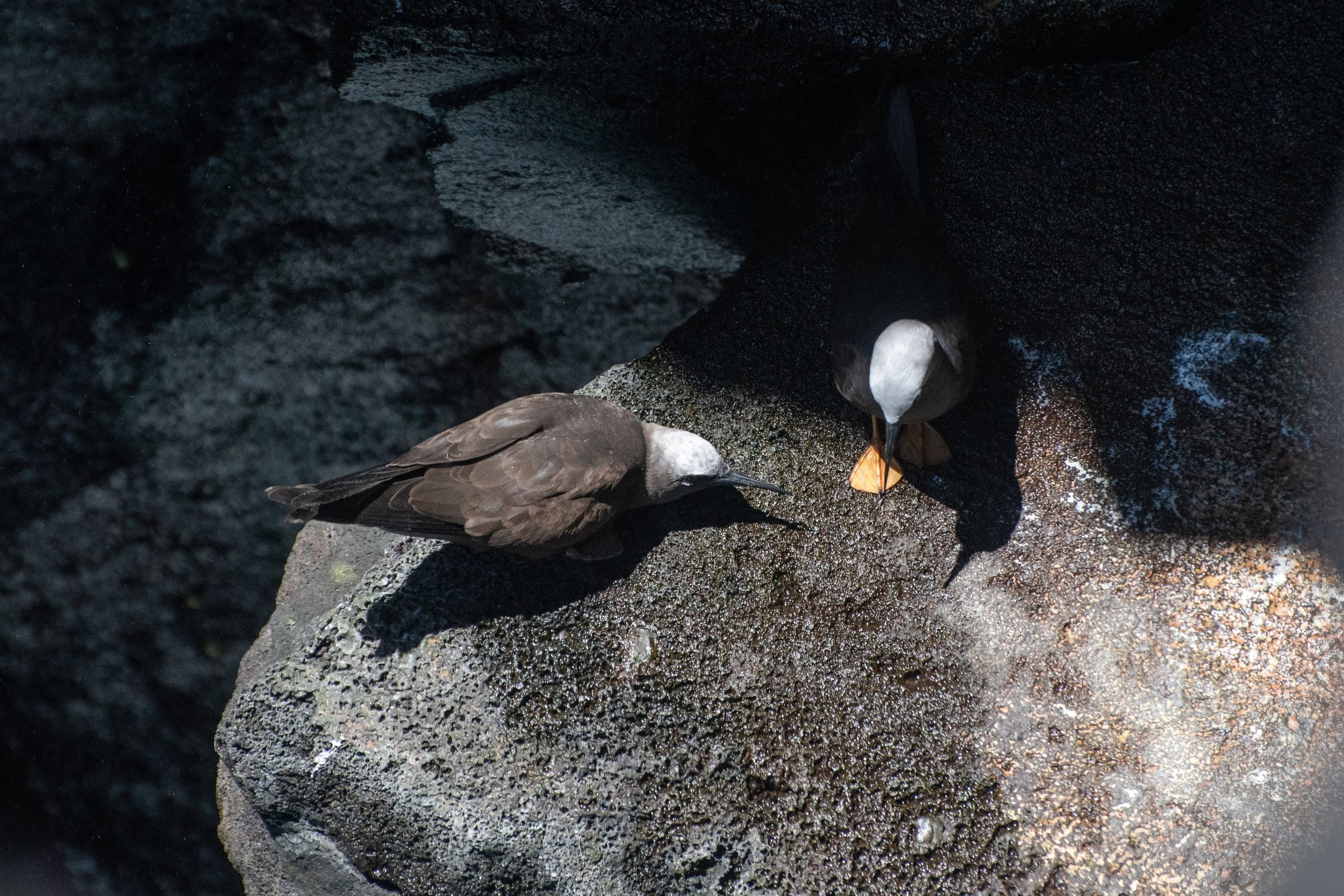Kaunāmano
Paʻula, Kaunāmano
“Inā he nui kau ukana e lawe mai ana, aha hoʻi no ʻoe me ka ukana.
”
If you come down with a big bundle (from the mountains), you are going home with a big bundle (from the sea)."
Historic railroad to Honuapo, Kauanāmano
On Hawai‘i Island’s Southeastern Coast, signs line the highway promoting the sale of almost the entire makai (seaward) portion of the historic ahupua‘a (land division) of Kaunamano. These 1,363-acres of stunning Ka‘u shoreline and pasture include four miles of the ancient Ala Kahakai National Historic Trail which once circled the island, and a web of traditional trails leading to the hundreds of ancient Hawaiian cultural sites throughout the property.
Kaunāmano means “multitudes are placed here,” reflecting the thriving fishing community that once lived and trained in lua—a traditional Hawaiian martial art— on the southeastern coast of Hawai‘i Island. These 1,363-acres of Ka‘u shoreline and pasture include four miles of the ancient Ala Kahakai National Historic Trail, and traditional trails leading to the hundreds of ancient Hawaiian cultural sites throughout the property.
Pohina Pali, Kaunāmano
Kaunāmano boasts more than 400 ancient Hawaiian cultural sites with over 3,900 features, including Pa‘ula Fishing Village, Puhi‘ula Cave, heiau (place of worship), burial sites, petroglyphs, and pictographs. Preserving the land will honor the stately, resilient people who once lived at Kaunamano and whose descendants continue to make Ka‘u their home.
Herbert Kuʻumi Kin In, Alfred Kalama Kahakua, and ʻohana at the Pane’ene’e waterfall, Kumauna, Ka’alaiki.
“Ma muli o kēia loaʻa ana o kēia mau mea maikaʻi o kākou, mea pono no ia kākou e hana i kahi mau mea e Waiho iho ai no nā poʻe e hele mai ana mahope. E ʻike kēia lākou.”
“Because we have these good things, we should do the right thing to leave something for those who are coming after us. That they may know.”
Born in Kaʻalaiki, Kaʻū, ʻAnakala Kuʻumi Kin In lived at Kaunamanō with his wife. Today, his descendants continue to visit this wahi pana, one of the many ʻohana who consider Kaunamanō their home.
The Trust for Public Land, Ka‘ū community, Keanu Family, and many community groups such as Ka ‘Ohana O Honu‘apo partnered with Ala Kahakai Trail Association to protect Kaunāmano as a living legacy of the storied district of Ka‘u.
Kaunamanō conserved for community stewardship
“Puhiʻula cave in Kaunāmano, like so many other places in Kaʻū, is very special to my ʻohana. Many years ago, as a young girl, my great-grandmother, Mary Kawena Pukui, would go there to collect paʻakai with her grandmother, Naliipoaimoku, or to get fish from a relative, Opupele. Years later, she wrote about this place that provided our ʻohana with sustenance in mele, stories, and academic works. Now, I can go there with my children and we are still provided with paʻakai, shelter and a place to connect with our kūpuna. I know they are smiling down at us knowing the coastline has been preserved.”
The Trust for Public Land facilitated the acquisition and the community united in the effort to raise $6.71 million in public funds to buy and protect the land and convey it to Ala Kahakai Trail Association for community and cultural stewardship. ATA is a Hawai'i island-based, Native Hawaiian non-profit whose mission is to support and guide a community-managed trail that honors those who came before and perpetuates traditions for those who follow – with protocols and respect for Hawai‘i’s past, present and future. ATA will work with the County to develop a community management plan for Kaunāmano and steward the land in close partnership with the Ka‘ū community, descendants, and nonprofits.
“We were humbled to work with the Ka‘ū community, descendants, and Ala Kahakai Trail Association to protect Kaunāmano. We mahalo the County and the State for partnering with us in this effort, and extend special thanks to the landowner EWM Enterprises for its patience and generosity. The Ka‘ū community fought long and hard for this vision, and under their stewardship we know Kaunāmano will flourish.”
The County of Hawai‘i PONC Program contributed $4.31 million, and the State LLCP contributed $2.4 million toward the conservation purchase. The property is now encumbered by a perpetual conservation easement owned by the County of Hawai‘i restricting the land to cultural, conservation, and agricultural uses, as well as a permanent deed restriction required by LLCP.
“Preserving lands with significant archaeological features that also provide coastal trails for the community is of great importance and will benefit current and future generations. We are grateful to be a part of these efforts and will continue to support The Trust for Public Land over the years.”
Kaunāmano’s protection conserved 3.3 miles of coastline and marine resources including a tidepool complex, coves, and sea caves. The nearshore area is home to migrating humpback whales, dolphins, endangered monk seals and Hawksbill turtles, threatened green sea turtles, and an abundance of fish, limu, and shellfish. The Ka‘ū community can now forever rely on these diverse marine resources for subsistence fishing, gathering, and cultural practice.
The property's protection will allow Kuahiwi Ranch to continue grazing cattle on the property. Kuahiwi Ranch is owned and operated by three generations of the Galimba family and specializes in local, free-range, grass-fed beef which contributes to Hawai’i’s food security.
Noio Bird, Anous minutus
(Photo Credit: Alex Wang)
“Kaunāmano protects native seabird habitat, and many other incredible natural and cultural resources along the coast and inland. We are thrilled that the Land Conservation Fund contributed to its preservation. ”
Kaunāmano’s coastline and the Māniania Pali will provide protected habitat for native coastal plants and native seabirds like noio (black noddies) and koa‘e kea (white tailed tropic birds) that nest along the cliffs.
The Ka‘ū community has been working for decades to protect their beloved 80 mile coast to honor their kūpuna and empower future generations to perpetuate their culture and rural, subsistence lifestyle. The protection of Kaunāmano is one among several successful Ka‘ū conservation projects over the years, including Honu‘apo Fishpond and Kāwā Bay owned by the County of Hawai‘i, Waikapuna conserved in 2019, and Kāwala, Manākaʻa Fishing Village, and Honu‘apo Ranch Lands which are owned by Kuahiwi Ranch and are now protected by privately funded conservation easements. All seven projects have conserved 6,199 acres, precious cultural landscapes, pasture land, and connect over 8.5 miles of the Ala Kahakai National Historic Trail.




















